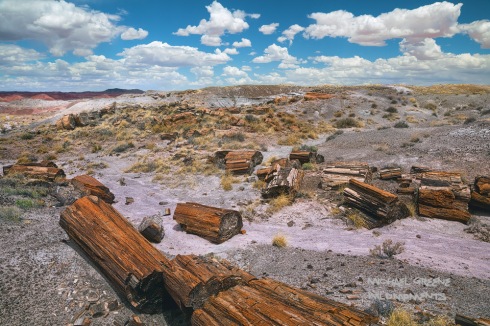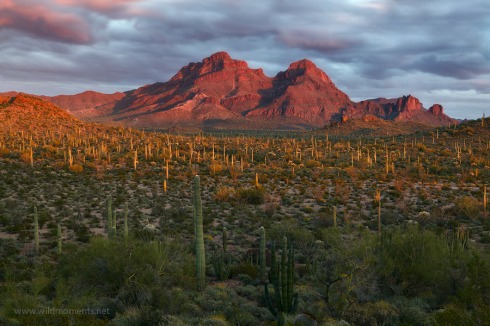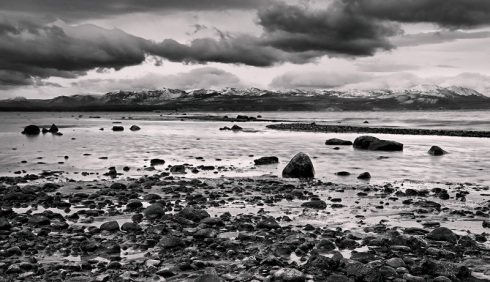Exploring the Painted Desert and Black Forest areas of the Petrified Forest National Park

“The Wanderers” Early morning dappled light in a remote area of the Petrified Forest
The Petrified Forest National Park lies along the remote eastern border of Arizona near the small railroad town of Holbrook. Surrounded by the Hopi, Navajo and Zuni Indian Reservations, vast rolling badlands feature copious amounts of petrified wood. A paved road connects two visitor centers. The drive between features various landmarks, overlooks, pueblos, mesas and other Route 66 curiosities.
The park closes at sunset and does not have a campground. The only way to spend the night is by backpacking. Entrance fees are $20 and backcountry permits are free. Of course, bring plenty of water!
Timing your visit to this arid high-desert playground is tricky. Expect 40-degree differences between highs and lows. There are no perfect months for weather. Late spring and early fall are top choices for comfortable days and chilly nights.
The mission of my June 1st visit to successfully capture the full moon. We choose to enter the backcountry from the unnamed trail near the Painted Desert Inn (historic landmark) in the northern sector. There are no topographic maps available at the visitor center and a GPS is highly recommended.
After setting up camp, I settled upon a rocky perch ringed with various geologic oddities overlooking crimson badlands for the sunset session. Light was harsh and a 400 mm lens would have been useful. Photography was tricky especially finding suitable foreground compositions and capturing adequate depth of field.

- “Extraterrestrial Flapjacks”
As the light waned I was almost to busy pursuing my goal of the perfect shot to notice the absence of the full moon. The sky was ninety-percent clear but obviously it was hiding somewhere. I could not even see a source of light! As I packed up my belongings writing off another opportunity to capture one of my favorite subjects…the moon peeked out behind the veil of thick clouds. I worked quickly to capture the scene and to my delight to develop an adequate rendition of my experience.

“Lunar Fortress”
As the night progressed the clouds thickened and when I awoke I knew that it would be a fantastic sunrise. The color appeared quicker than anticipated as I scrambled up a steep, clay mesa behind our campsite near a wash. While I had not scouted this spot the night before, I was pleased with the unending views as well the abundant petrified logs.

“Primordial Firewood”
While I expected the sky to clear, a fresh new layer of clouds flew into the scenery. I climbed higher above the badlands for a bird’s eye before settling on a distant location. I predetermined a safe way down and knew that I’d have just enough to time to capture the best light.

“Solitary Awakening”
While the day heated up we ventured out for one last round of sight seeing before returning to our vehicle. The desert smelled of rain and distant storm clouds confirmed our senses. I had difficulty finding the location I had visited earlier but stumbled upon miles of other enticing scenic interests. I’d love to learn about your favorite interpretation of my experiences. Thanks for reading and sharing!

“Day of the Sky”

“The Long Wood”


















